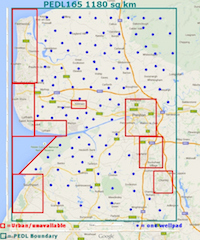Lord save us from badly informed academics
Today in Parliament MPs will vote on the secondary legislation via statutory instrument on fracking in protected areas.
Radio 4 carried an article on the Today programme this morning on the vote and invited Professor Richard Davies of Durham University’s ReFine group to comment.
Profesor Davies was dismissive of the issues raised and clearly stated that as far as he was aware fracking from the surface would not be permitted from the surface of a National Park by the legislation. His actual words were as follows
“Well, firstly, the fracking starts from something called a well pad and a well pad is the size of a cricket pitch1, so you may see a cricket pitch area of land which can’t be, as I understand it, in the National Park. It has to be to one side of the National Park”
Perhaps he’s been too busy researching and refining other things to look at the relevant statutory instrument (as some of those opposing fracking have done). The SI only deals with the depth at which the act of fracking can take place (by defining a protected area as “any land at a depth of 1200 metres beneath a relevant surface area”). There is in fact nothing in the SI which prohibits any fracking-related surface activity in a groundwater Special Protection Zone. Neither is there anything which prohibits surface activity in a National Park or in an Area of Outstanding National Beauty. Additionally, there is nothing which prevents surface activity OR fracking in Sites of Special Scientific Interest (SSSIs) at all, in spite of the “outright ban” on fracking in these areas promised by the Government. For more detail on the limitations of the Statutory Instrument please refer to this article.
This is not just our interpretation. This extraordinary exchange took place during the committee meeting which sent this SI to the House on 27th October 2015
Christian Matheson:
I accept what the Minister is saying: the regulations deal with what is happening far below ground level. But for that to happen far below ground level, something has to happen at the surface. Frankly, I cannot see why the Minister is making that rather false distinction.Andrea Leadsom:
I am grateful to the hon. Gentleman because he gives me the chance to repeat what I said, which is that the Infrastructure Act required the Government to lay regulations to deal with the hydraulic fracturing process, which happens far below the ground. We will, as soon as possible, make a statement regarding the areas on ground level—the surface drill level—in which activity will be banned. We are looking very carefully at how to define and protect our most valuable areas. We will be making announcements shortly, but that is not for today. These regulations are the consequence of a requirement in the Infrastructure Act to deal with the subsurface implications, so I will move on
So it is clear that Minister herself accepts that the SI, being laid before Parliament for a vote today, is deficient in terms of fulfilling the promise of an outright ban on fracking in National Parks and AONB made back in January in a frantic effort to garner support for the Infrastructure Bill of which this SI will form a part.
Again there can be no doubt that this promise was made. It is quoted on a government web site
The Government’s commitment is to an outright ban on fracking in National Parks, Sites of Special Scientific Interest (SSSI) and Areas of Outstanding Natural Beauty (AONB).
Given all this it is frustrating to hear the article on Radio 4 giving air time to somebody who, if they are not deliberately misleading the public, is spectacularly ill informed. Perhaps next time Radio 4 might be more discriminating in their choice of “expert” as today they appear to have been party to propagating a piece of gross misinformation.
Note:
1. As an aside Professor Davies comparison with a cricket pitch is also totally misleading. A cricket pitch consists of the central strip of the cricket field between the wickets — 1 chain or 20.12 m (22 yards) long and 3.05 m (10 feet) wide. This would give a surface area of 61.4 square metres. A frack pad according to UKOOG would require a site of about 2 hectares or 2,000 square metres so Professor Davies is misleading us there by a multiple of 325. Even a cricket ground conforming to ICC Standard Playing Conditions at 16,000 – 20,000 square yards would be around 20-35% smaller than a 2 hectare frack pad.)

































